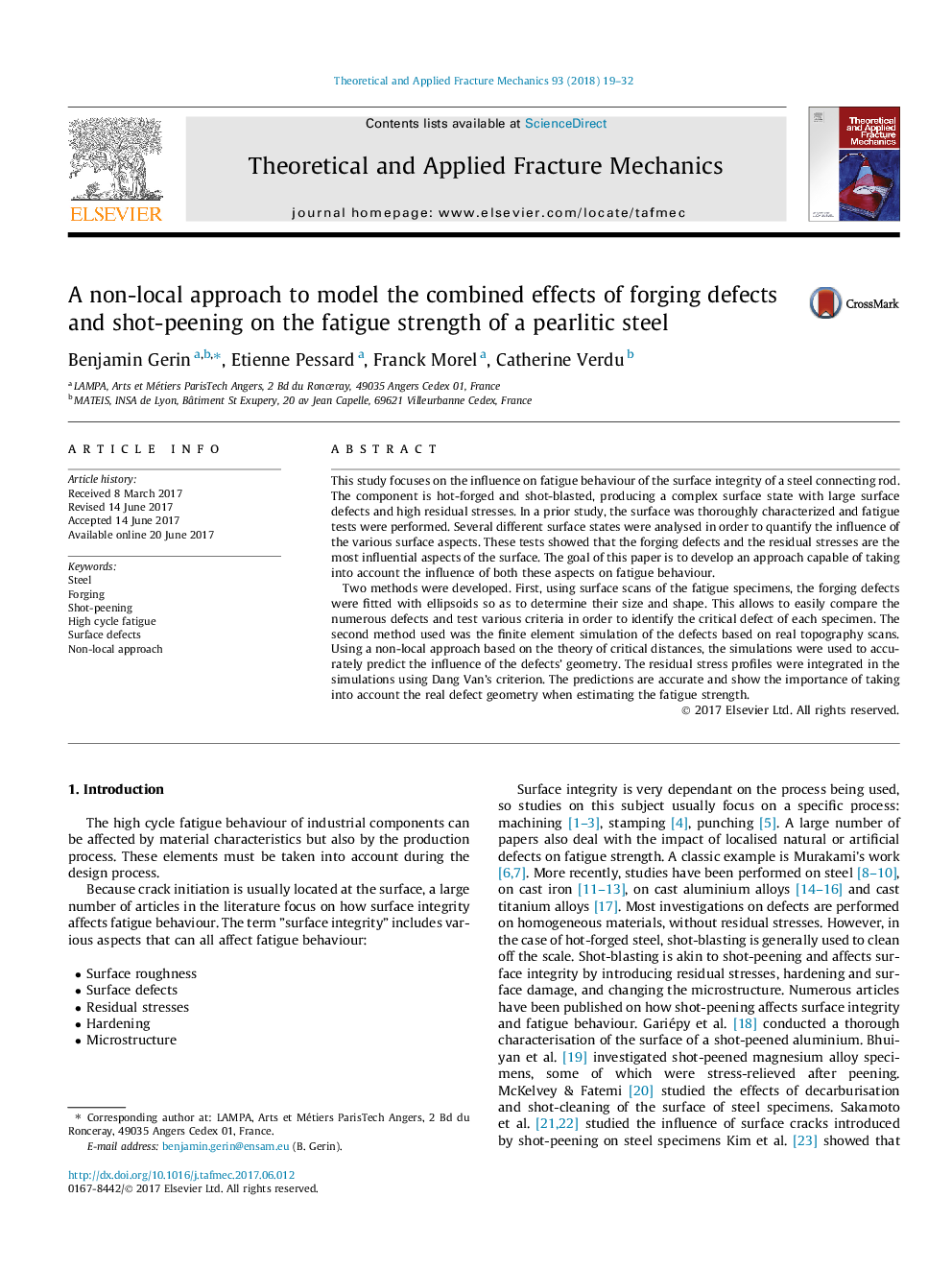| Article ID | Journal | Published Year | Pages | File Type |
|---|---|---|---|---|
| 7196219 | Theoretical and Applied Fracture Mechanics | 2018 | 14 Pages |
Abstract
Two methods were developed. First, using surface scans of the fatigue specimens, the forging defects were fitted with ellipsoids so as to determine their size and shape. This allows to easily compare the numerous defects and test various criteria in order to identify the critical defect of each specimen. The second method used was the finite element simulation of the defects based on real topography scans. Using a non-local approach based on the theory of critical distances, the simulations were used to accurately predict the influence of the defects' geometry. The residual stress profiles were integrated in the simulations using Dang Van's criterion. The predictions are accurate and show the importance of taking into account the real defect geometry when estimating the fatigue strength.
Related Topics
Physical Sciences and Engineering
Engineering
Mechanical Engineering
Authors
Benjamin Gerin, Etienne Pessard, Franck Morel, Catherine Verdu,
